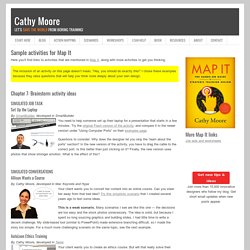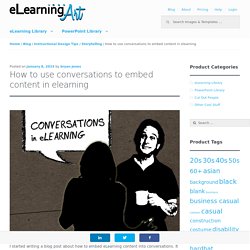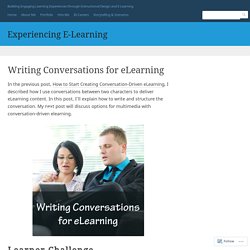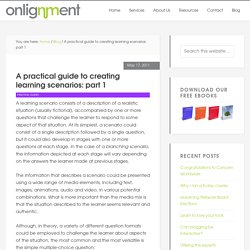

Sample activities for Map It. Here you’ll find links to activities that are mentioned in Map It, along with more activities to get you thinking.

The inclusion of an activity on this page doesn’t mean, “Hey, you should do exactly this!” I chose these examples because they raise questions that will help you think more deeply about your own design. Chapter 7: Brainstorm activity ideas Set Up the Laptop. Our e-Learning Demos. Access Our e-Learning Demos Thank You!

Access the demos below: Thank you for requesting access to our e-learning demos! Check out our e-learning demos below and see for yourself how we've been able to create e-learning that truly brings performance change. Or, if you would like to see demos that are more relevant to your business needs, schedule a time to talk with us!. Pediatric Weight Management - Kaiser Permanente. How to use conversations to embed content in elearning – eLearningArt. I started writing a blog post about how to embed eLearning content into conversations.

It was ok. But I didn’t love it. Writing Conversations for eLearning. In the previous post, How to Start Creating Conversation-Driven eLearning, I described how I use conversations between two characters to deliver eLearning content.

In this post, I’ll explain how to write and structure the conversation. My next post will discuss options for multimedia with conversation-driven elearning. Learner Challenge In the introduction of the story, show how the learner is facing a challenge. You searched for scenario. How to Engage Learners with Scenario-based Learning by Hans Kövi & Kasper Spiro : Learning Solutions Magazine.
A practical guide to creating learning scenarios: part 1. A learning scenario consists of a description of a realistic situation (usually fictional), accompanied by one or more questions that challenge the learner to respond to some aspect of that situation.

At its simplest, a scenario could consist of a single description followed by a single question, but it could also develop in stages with one or more questions at each stage. In the case of a branching scenario, the information depicted at each stage will vary depending on the answers the learner made at previous stages. The information that describes a scenario could be presented using a wide range of media elements, including text, images, animations, audio and video, in various potential combinations.
What is more important than the media mix is that the situation described to the learner seems relevant and authentic. What would you do first? Using a Three-Act Structure to Create Simple and Effective Scenarios for eLearning by Stacey Maloney : Learning Solutions Magazine. Beginning Instructional Authoring: Getting the Content You Need from SMEs, Part 1 by Patti Shank : Learning Solutions Magazine. Beginning Instructional Authoring: Getting Good Scenario Content from SMEs by Patti Shank : Learning Solutions Magazine. Last month I began discussing the all-too-common difficulty that eLearning folks face of getting the right content from subject matter experts (SMEs).
And as I said last month, it’s such a typical problem that it’s a bit of an inside joke in our field. Too often we ask for information about the wigglytibbit and the SME sends either 1) a PowerPoint presentation with minimal useful information or 2) a mountain of documents (which she now expects you to use, since she’s taken the time to find them). So last month I suggested three generic ways to get the specific content you need: